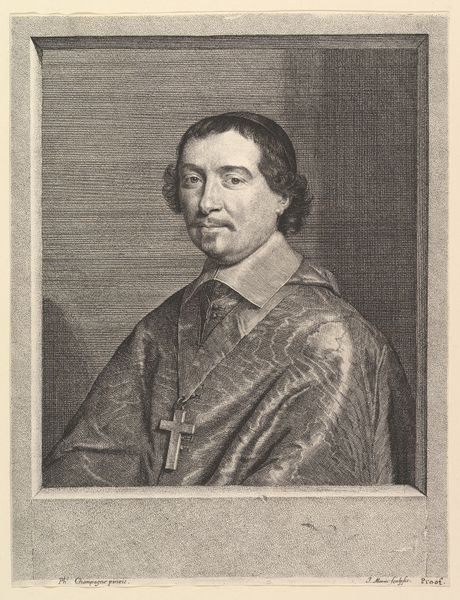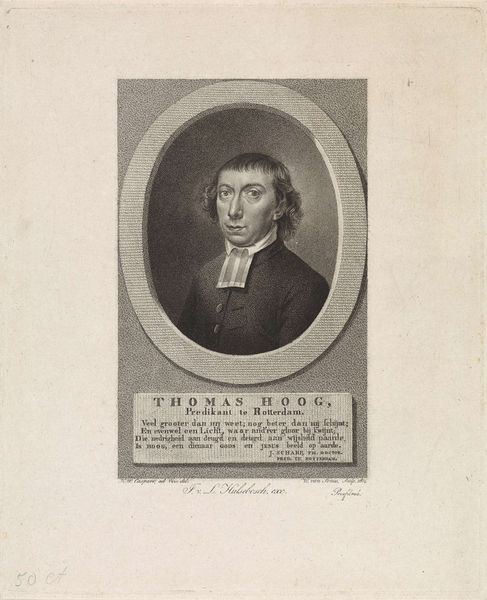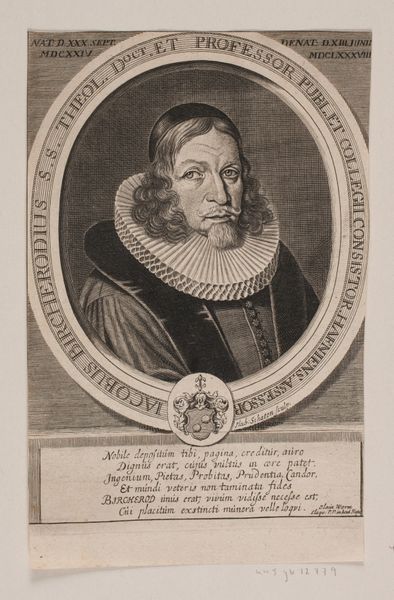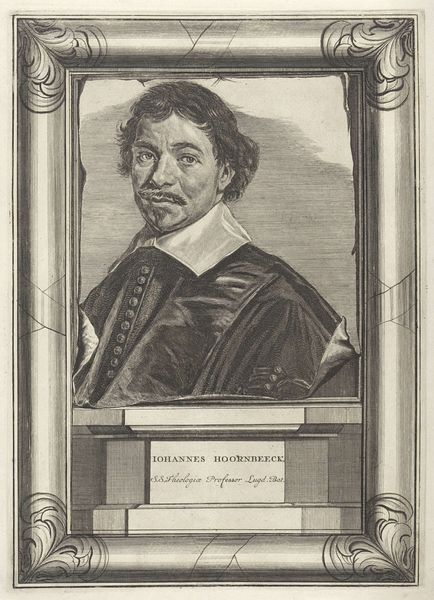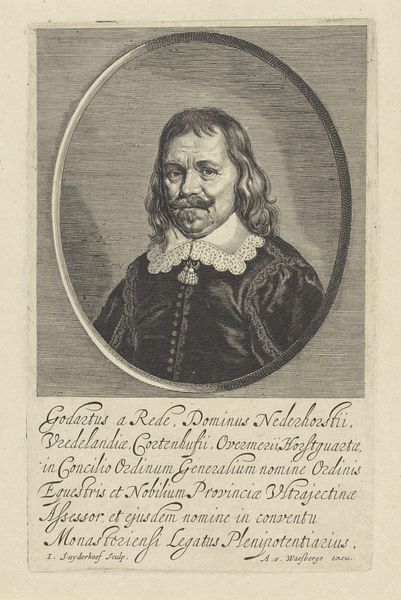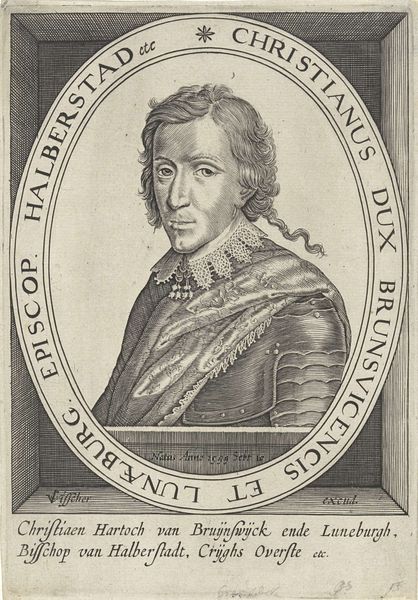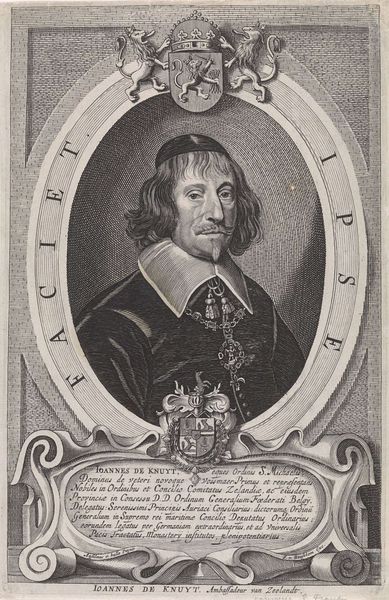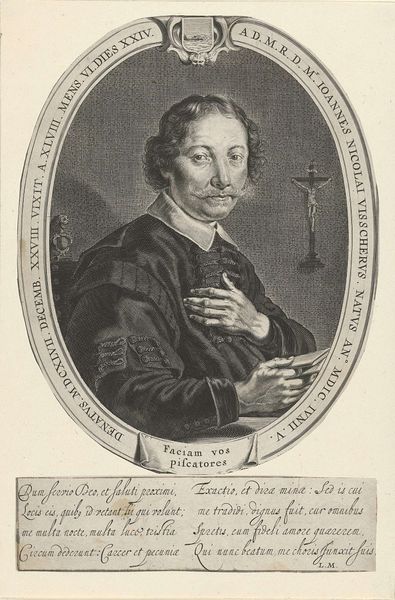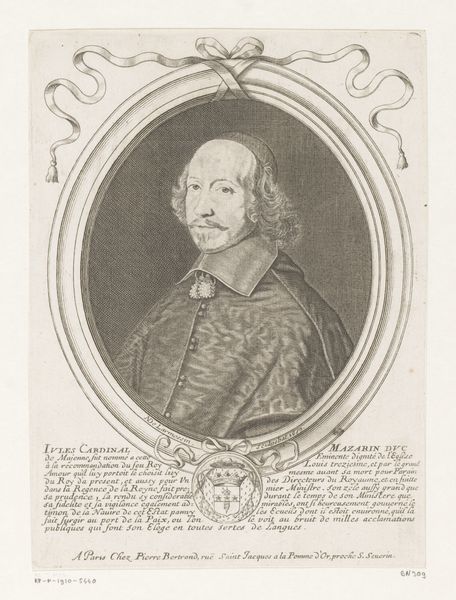
print, engraving
#
portrait
#
baroque
#
dutch-golden-age
# print
#
figuration
#
portrait reference
#
line
#
history-painting
#
engraving
Dimensions: height 367 mm, width 257 mm
Copyright: Rijks Museum: Open Domain
This print, made by Theodor Matham, depicts Guilielmus Surendonck, a rector from Brabant. It's an engraving, meaning Matham would have used a tool called a burin to carve lines into a metal plate, likely copper. Ink is then pressed into these lines, and the image transferred to paper. Look closely and you can see the remarkable precision and detail achieved through this process. The density of the lines creates tone and texture, defining Surendonck's features, the folds of his robe, and even the subtle shading of his face. Engraving was a highly skilled craft, requiring years of training. But it also had a crucial connection to the wider world of commerce and information. Prints like this one were relatively reproducible, allowing images and ideas to circulate widely. Consider the labor involved – from the mining of the copper to the hand-printing of each sheet. This work is a testament to both artistic skill and the burgeoning print industry of the 17th century. By understanding the materials and processes involved, we gain a deeper appreciation for the art form.
Comments
No comments
Be the first to comment and join the conversation on the ultimate creative platform.

